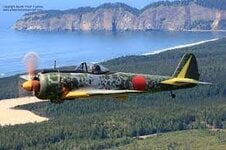GrauGeist
Generalfeldmarschall zur Luftschiff Abteilung
The IJN's I-400 class submarines were unrivaled until the advent of nuclear submarines and could carry three attack aircraft in it's hangar.
The KI-45 was one of the best looking heavy fighters of the war (as far as ones that saw combat, otherwise the KI-83 takes it, hands down), the KI-84 was not only a good looking fighter, but dangerous as hell to the best of any Allied fighter type.
Judging a nation's ability to competantly wage war based on the looks of aircraft aesthetics doesn't hold water.
The British had some fugly aircraft, the Germans had a few questionable designs (Bv141, anyone?) the U.S. had a few howlers and let's not get started with some Soviet designs.
The KI-45 was one of the best looking heavy fighters of the war (as far as ones that saw combat, otherwise the KI-83 takes it, hands down), the KI-84 was not only a good looking fighter, but dangerous as hell to the best of any Allied fighter type.
Judging a nation's ability to competantly wage war based on the looks of aircraft aesthetics doesn't hold water.
The British had some fugly aircraft, the Germans had a few questionable designs (Bv141, anyone?) the U.S. had a few howlers and let's not get started with some Soviet designs.

